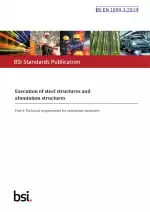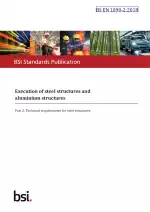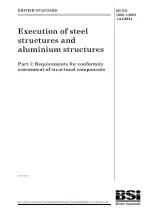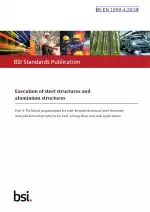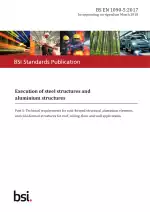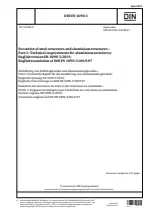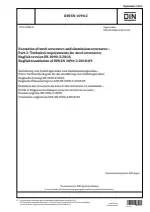Execution of Steel Structures and Aluminium Structures: Technical Requirements for Aluminium Structures
Also Known As:
BS EN 1090-3:2019 is a standard that outlines the technical requirements for the execution of aluminium structures. It covers various forms of aluminium materials such as rolled sheet, strip, and plate; extrusions; cold drawn rod, bar, and tube; forgings; and castings. The standard applies to components with a minimum thickness of 0.6 mm for welded components and 1.5 mm for non-welded components.
This standard is applicable to structures designed according to relevant parts of EN 1999, which is the European standard for the design of aluminium structures. However, if the structures are designed according to other design rules or involve alloys and tempers not covered by EN 1999, a judgment on the reliability elements in those design rules is required.
The standard includes requirements for surface preparation prior to the application of a protective treatment and provides guidelines for applying such treatment in an informative annex. It also offers flexibility for specifying requirements to match project-specific needs. Additionally, BS EN 1090-3:2019 is also applicable to temporary aluminium structures.
| Descriptors | Buildings, Welded joints, Metalworking, Erecting (construction operation), Aluminium, Quality control, Approval testing, Construction operations, Structures, Welding, Adhesive-bonded joints, Inspection, Tolerances (measurement), Fasteners, Purchasing, Corrosion protection, Metal sections, Surface treatment, Grades (quality), Structural design, Structural systems |
| ICS Codes | 77.150.10 - Aluminium products 91.080.13 - Steel structures 91.080.17 - Aluminium structures |
| Language(s) | English |
| ISBN | 978 0 580 95871 7 |
| File Size | 3.3 MB |

